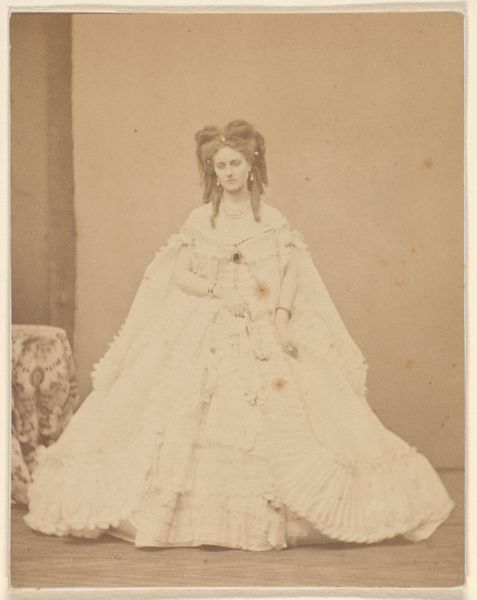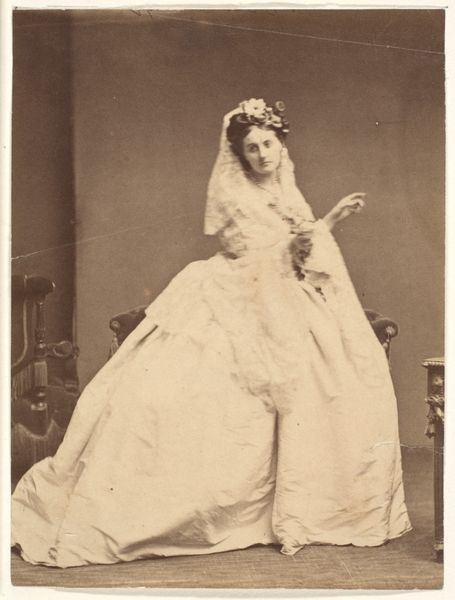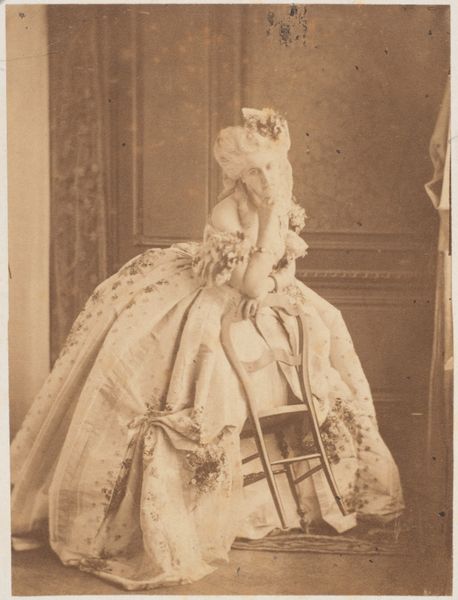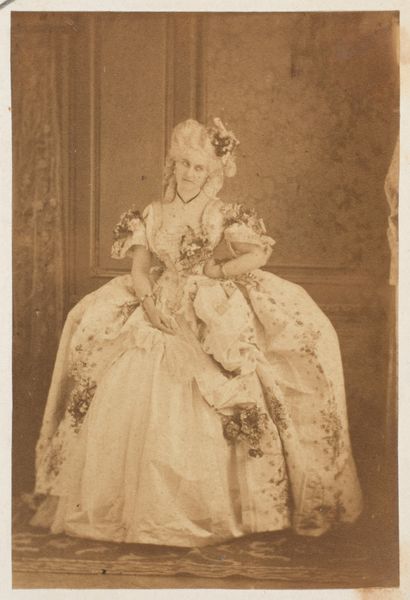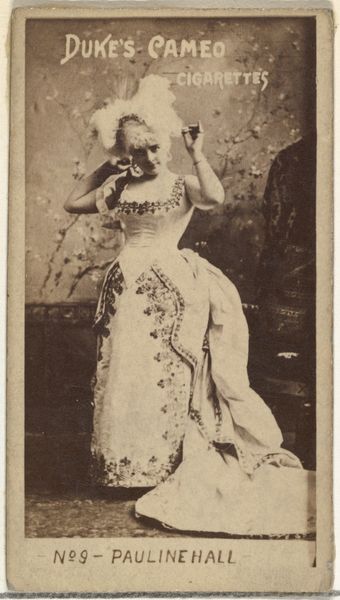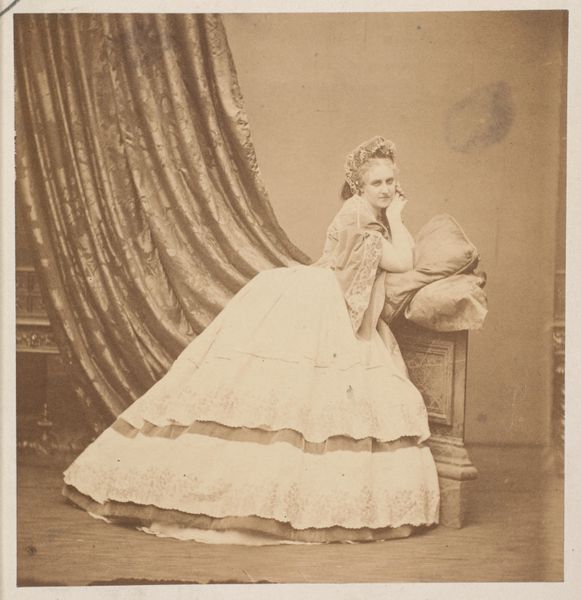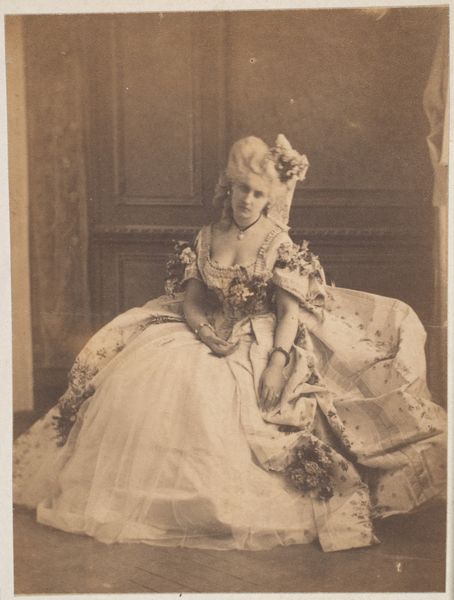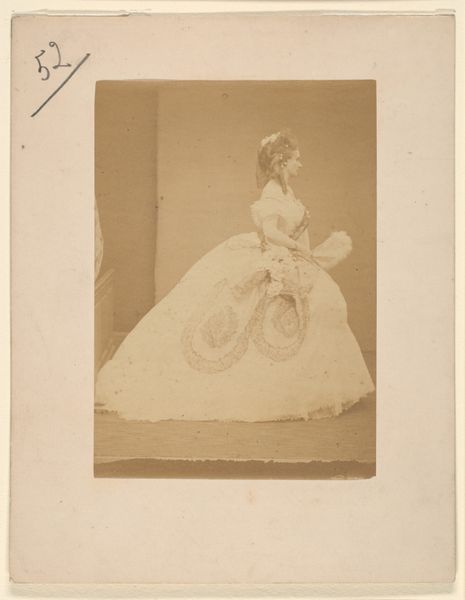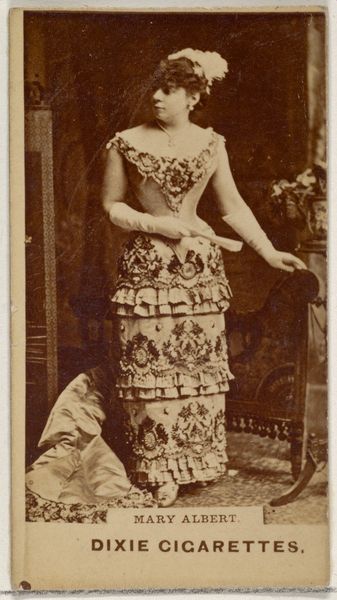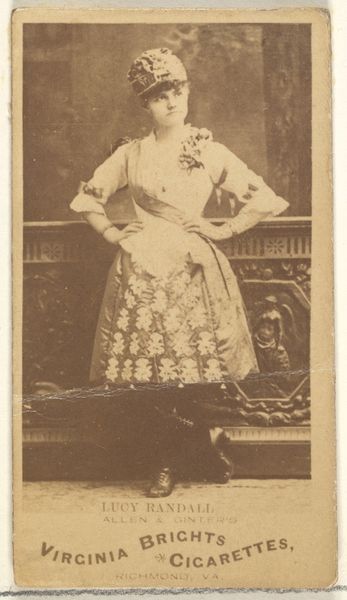
Dimensions: 9.8 x 10.8 cm. (3 7/8 x 4 1/4 in.)
Copyright: Public Domain
Curator: Before us is "La Frayeur," a photographic print from the 1860s by Pierre-Louis Pierson. The work resides here at the Metropolitan Museum of Art. Editor: There's an almost unsettling quality to it, don't you think? The scale of her dress, the blank stare—it feels caught between worlds, substantial and ghostly all at once. Curator: Indeed. Let's consider its formal construction. The stark contrast between the pale dress and the muted background immediately isolates the figure. Her gaze, averted, establishes a narrative tension. Editor: I'm drawn to the materiality itself. Imagine the yards and yards of fabric necessary to create such a garment, the labour involved in all the embellishments. Who was it made for, and under what conditions was the fabric produced? Curator: We can safely assume someone of means, based on the dress itself and the fact she’s sitting for such a photograph. Beyond this material extravagance, there's also a profound psychological element—"La Frayeur" translates to "The Fright," which invites consideration of fear, alienation, performance of vulnerability. Editor: Consider the limitations and techniques involved to get this print! The light sensitivity of the plates, the time she had to pose for. The constraints put a strain on how much can be said in one photograph versus the intention that lies beneath. I'm imagining a studio full of artificial light and props creating the ambiance. Curator: An intriguing point. The sepia tones also seem integral in establishing the work's romantic, ethereal nature, reminiscent of classical painting. Editor: I keep wondering what wasn't in the shot – the obscured aspects of production and posing left in shadow while an affluent lady gets centered and put on display for eternity. Curator: Precisely, its visual elements function as potent signifiers. From its dramatic use of contrast to its carefully staged setting, “La Frayeur” communicates effectively with us. Editor: And perhaps, behind the fright, are histories of fabrication – from fabrics, to dark room production, to setting an economic stage from which photographic studios could appear to record such theatrical dramas for the elite. Curator: It gives us an uncanny insight into its own world. Editor: It certainly provides a point to ruminate about labour in art.
Comments
No comments
Be the first to comment and join the conversation on the ultimate creative platform.


